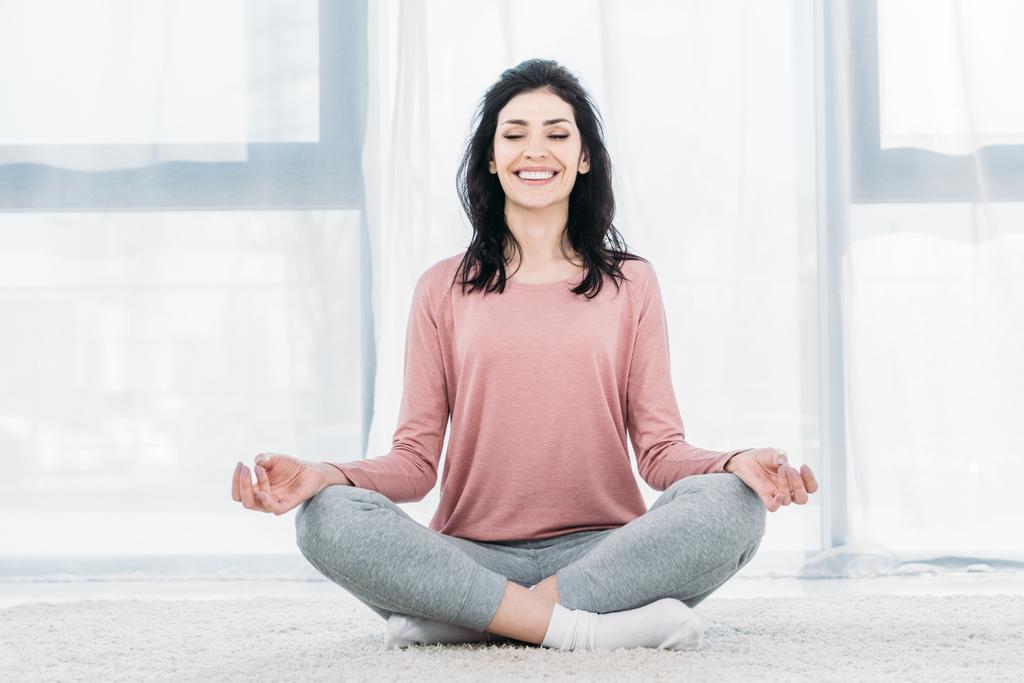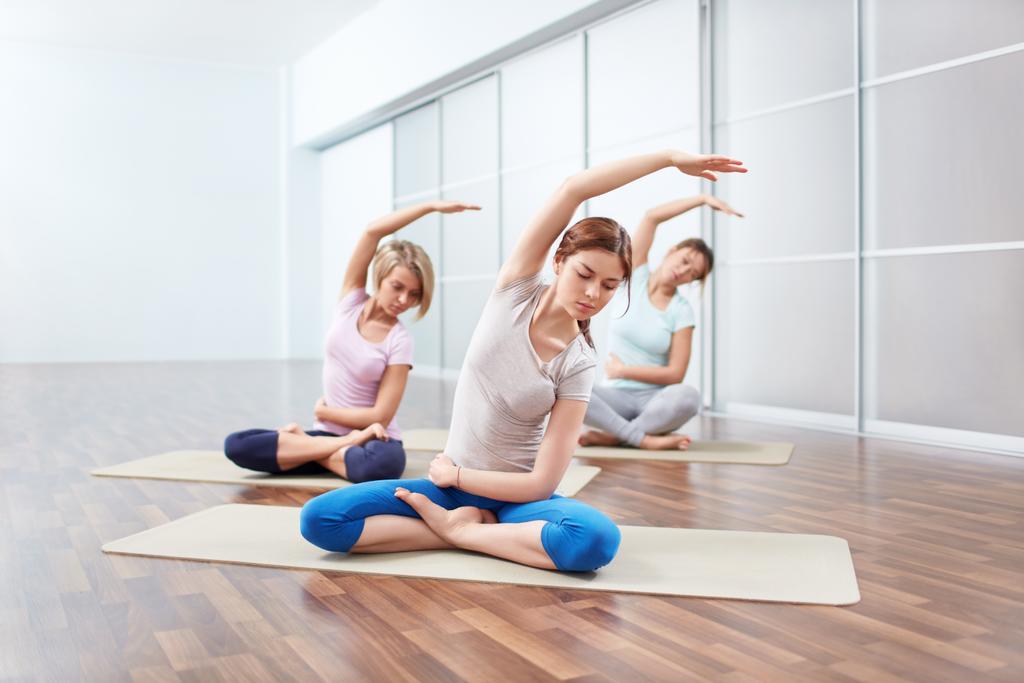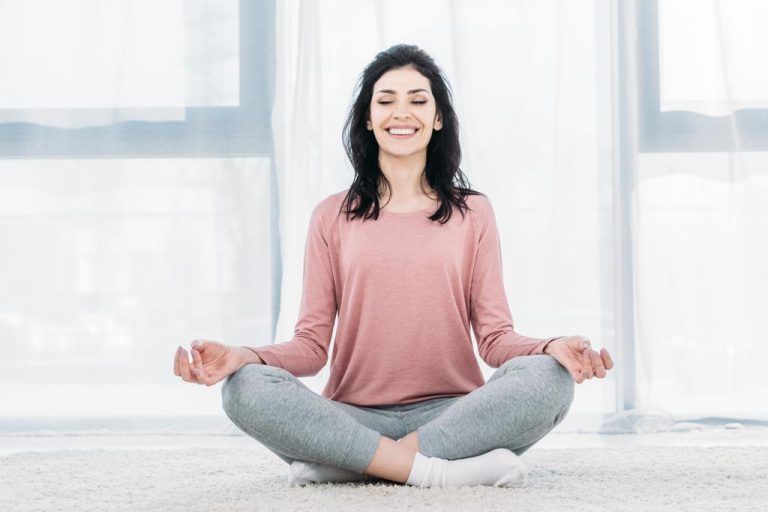We reveal the best tips for beginners.
Yoga: what does sport bring?
According to the Deutsches Ärzteblatt, yoga has a positive effect on both the body and the psyche thanks to the diverse exercises with an even change between tension and relaxation. For example, gentle stretching mobilizes the spine and relieves tension. Targeted exercises with your own body weight, on the other hand, strengthen a wide variety of muscle groups. In this way, the fitness trend is intended to invigorate the whole body. In addition, blood circulation and concentration are also boosted.
In addition, yoga can consciously prevent health problems, and in some cases even improve them. On the one hand, the mobilizing exercises work against incorrect posture patterns, such as a crooked back when sitting at a desk for a long time. Painful back or neck pain as well as incorrect strain and joint problems can be effectively prevented. On the other hand, relaxed, calm yoga elements help with annoying headaches, for example.
Relax and relieve asthma with the right breathing technique
In order to be able to perform a yoga session effectively and correctly, breathing is particularly important. This should be complete, deep and slow and is considered a central part of every exercise
If you practice this regularly and consciously, you can change your own breathing behavior in the long term. An important quality to declare war on tension or migraines. In addition, asthma patients in particular can benefit from conscious yoga breathing. In a study, international researchers from the Cochrane Collaboration were even able to identify a slight improvement in asthma symptoms. However, these are not all advantages! In addition, endurance is strengthened, shortness of breath is avoided and the vegetative nervous system is calmed. This, in turn, has a positive effect on the cardiovascular system and even high blood pressure.
This is how the yoga start is guaranteed to succeed
Basically, yoga is suitable for everyone – regardless of age, stature or health condition. Because among the countless styles, everyone is sure to find what they are looking for. Special forms, such as back yoga, are particularly suitable for counteracting certain physical ailments. However, if yoga newcomers want to do something good for their entire body, you should take a closer look at the following styles.
Hatha Yoga
Hatha yoga is currently the best known and most widespread technique. The focus is always on your own strength, energy and endurance. These three components should be individually strengthened through an even mix of physical and relaxation exercises. The aim is also to create a healthy balance between body and mind and to find your own centre.
Kundalini Yoga
In Kundalini Yoga, in addition to the movement of the body, the focus is primarily on spirituality. Dynamic exercises and meditations are designed to strengthen and relax the body. The focus is also on finding inner peace and freeing yourself from negative thoughts. This also has clear advantages for everyday life. Anyone who practices Kundalini Yoga regularly practices how to react more flexibly and less stressedly in a wide variety of situations.
Ashtanga Yoga
If all this sounds a bit boring to you, you should try Ashtanga yoga. Because there are fixed series of exercises with different levels of difficulty. The special thing about it: There are usually no breaks between the physical exercises. Discipline and ambition are particularly important here!
Effective exercises for yoga newcomers
The trend sport yoga can not only be learned in fitness studios or special yoga courses. For starters, simple exercises can also be easily tried out in your own four walls and thus gain initial experience with the well-known hype from India. The following positions are particularly effective and beginner-friendly.
Sun salutation to warm up
In the well-known yoga classic, various physical exercises are combined with one another in order to achieve a flowing movement. It starts standing up. Bring your arms together over your head as you inhale. As you exhale, bend your torso forward until your hands touch the floor or your feet. For more flexibility, beginners can also bend their knees slightly. With the next breath, the upper body is tensed, but the hands remain on the floor. Then one leg is stretched out backwards and the upper body is straightened. From here you can now switch to the “downward-facing dog” yoga exercise and a push-up-like posture. In order to maintain the flow of movement, it is advisable to straighten the upper body again and repeat the steps mentioned. The sun salutation is particularly suitable for warming up and can be performed as often as you like.
Downward facing dog as a yoga classic
The starting point for downward facing dog is on all fours or a plank. From this position, the hips are pushed upwards. However, the palms remain on the ground. In order to stretch the back particularly long, the stomach can be pulled inwards and tensed. Finally, try to raise your legs so that your heels touch the floor.
Cobra for a flexible spine
For the yoga cobra, it is best to start in the prone position. The hands touch the floor at shoulder height, the arms are close to the ribs. The backs of the feet are on the ground. With tense abdominal muscles, the shoulder blades are then pulled together in the back and the chest is slightly straightened. The hands, which press the body slightly upwards, have a supporting effect. It is important that the gaze is directed upwards.
Cat-cow for back pain
This exercise starts on all fours. Here you pull the navel in the direction of the spine and push it up in a kind of cat’s hump. To increase the effect, the chin should be pulled towards the chest. On the next breath, the abdomen is again pushed down, the shoulder blades back and the head up. The back is now in a hollow back position. In the cat-cow exercise, these two positions are varied several times.

The most important gadgets: You actually need this for the fitness trend
For a successful yoga start, in addition to comfortable clothing, you first need a suitable yoga mat. Important: Yoga and gymnastics mats are not the same! Because the perfect base for the Indian philosophy of life is a lot thinner, usually only about four to six millimeters thick. This results in a better grip on the hands and feet during the different exercises. Beginners in particular can stay in balance more easily and train effectively. Another important factor is the material. This must be non-slip in order to remain in the correct position despite sweaty hands. Yoga mats made of natural rubber are therefore recommended for beginners.
For yoga beginners, a so-called yoga block can provide effective assistance. The stable block made of cork or hard foam is used when some exercises cannot be performed correctly. It is used, for example, to avoid incorrect posture, to bridge distances or to enable a secure hold. This is exactly what often leads to difficulties for yoga beginners with little flexibility and balance. However, to avoid injuries, the yoga block must not have hard corners or edges.

